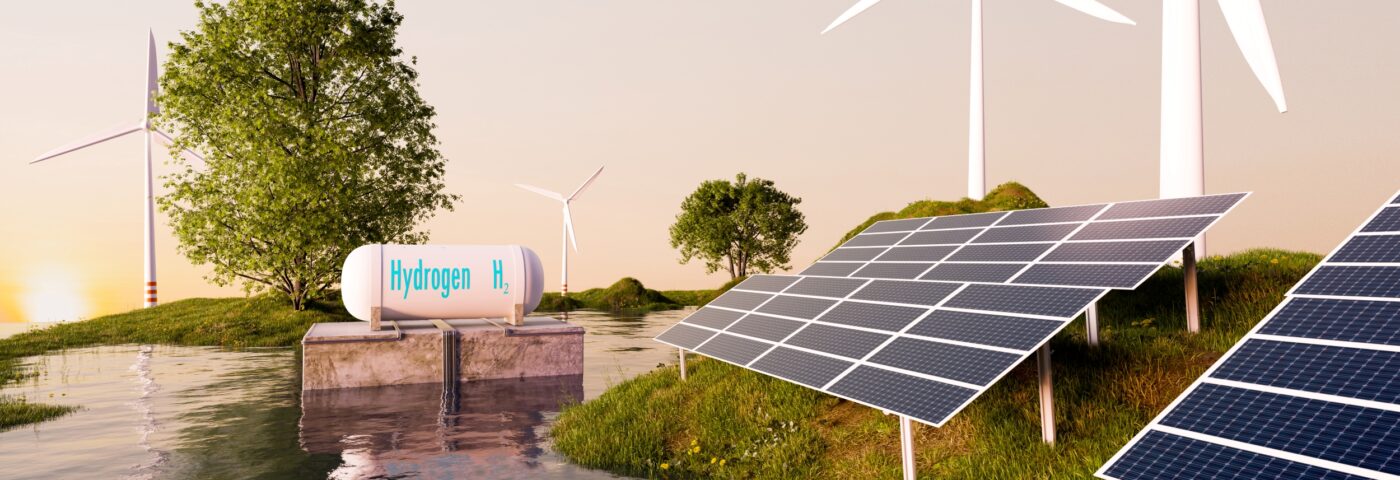Key Highlights
- Hydrogen, a clean and versatile energy carrier, produces energy through oxygen-based chemical reactions, emitting only water vapour as a byproduct, making it an attractive alternative to fossil fuels.
- The increased attention on hydrogen energy is shedding light on the long-term impact of fossil fuel-associated hydrogen production (also known as “blue hydrogen”), highlighting the need for cleaner hydrogen sources.
- This heightened focus has also triggered studies identifying potential risks and challenges surrounding hydrogen produced through renewable energy.
- The outcome document of the G20 Energy Ministers’ meeting in Goa, India, indicates the G20’s endorsement of zero- and low-emission hydrogen production and the development of transparent and resilient global markets.
Hydrogen has gained significant attention in recent years for its potential as a clean and versatile energy carrier. Its ability to produce energy through a chemical reaction with oxygen while only emitting water vapour as a byproduct has made it an attractive alternative to fossil fuels.
The Blue Hydrogen Problem
“Blue hydrogen” refers to hydrogen produced from fossil fuels, specifically through processes such as steam methane reforming (SMR) and coal gasification. Such methods are associated with high carbon emissions, which undermines the very objective of transitioning to clean energy.
The International Energy Agency (IEA) reported that in 2022, only about 1% of global hydrogen output was produced with renewable energy, which means that the remaining 99% was primarily based on fossil fuel technologies. A September 2023 report released by the Berlin-based Renewable Grid Initiative (RGI) points out that SMR-generated hydrogen produces 9 kg of carbon dioxide emissions per 1 kg of hydrogen.
What's more, blue hydrogen projects are believed to be at risk of becoming stranded assets. Such projects also require significant investments in carbon capture and storage (CCS) technologies, which add to the already high costs they incur. These issues pose a challenge to the viability of blue hydrogen projects in the long run, reasonably shifting focus to renewable energy sources.
And with hydrogen’s massive range of applications (including transportation, power generation, and industrial processes) and low to zero carbon emissions, it has become imperative to find cleaner and more efficient ways of producing it.
The Green Solution
To truly harness the potential of hydrogen as a clean energy source, it is crucial to produce it in a sustainable, cost-efficient, and carbon-neutral manner. One promising method for sustainable hydrogen production is through electrolysis, which involves using electricity to split water molecules into hydrogen gas and oxygen. This process can be powered by renewable energy sources, ensuring a zero-emissions outcome.
The Process of Renewable Electrolysis
Renewable hydrogen, now commonly referred to as “green hydrogen,” has been making waves amid the global race for net zero and energy security. In contrast to conventional, carbon-heavy methods, green hydrogen harnesses solar, wind (onshore, near-shore, or offshore wind), or hydroelectric energy to power the process of electrolysis. These innovative approaches not only reduce emissions but also offer sustainable and renewable sources of hydrogen fuel.
The United Nations Economic Commission for Europe (UNECE) reported that, by late 2022, over 70 countries around the world had either drafted or set in place their respective hydrogen strategies. The strategies include the adoption of low-carbon hydrogen production or the use of renewable sources. With such initiatives, there is vast potential for hydrogen to help meet the increasing demand for clean energy while reducing our dependence on fossil fuels.
Embrace a Sustainable Future at All-Energy & Dcarbonise 2024
Discover the latest advancements in renewable energy sources and innovative solutions that will pave the path to a greener and net zero future.
Beneath the Hype: Green Hydrogen's Existing Limitations
Dubbed “the fuel of the future,” hydrogen has emerged as a frontrunner in the race to decarbonisation, yet it is still faced with barriers to its widespread adoption.
In their September 2023 discussion paper, the Renewables Grid Initiative (RGI) argued that the EU’s 2030 hydrogen targets are oversold, warning that the prioritisation of renewables-assisted hydrogen production over direct electrification could lead to the inefficient use of wind and solar electricity.
Currently, green hydrogen production is more expensive than conventional, high-carbon methods. The steep costs are primarily due to the energy-intensive process of electrolysis, its dependence on renewable energy sources, and specialised equipment requirements. It also faces criticism for its relatively low efficiency. When hydrogen is used as a fuel, there are inherent losses: a significant amount of energy is lost (1) during electrolysis, (2) in the process of compression and storage, and (3) when it is ultimately converted into electricity.
Additionally, there is the question of storage and infrastructure. At present, most hydrogen is produced and used locally. But with the rising demand for hydrogen is the need to develop infrastructure that connects production and demand centres, which would translate to higher expenses that would likely be passed on to consumers.
Hydrogen Projects Bridging the Gap
Despite its issues and challenges, green hydrogen’s promise as a clean fuel can neither be denied nor ignored. It has the potential to play an unrivalled role in fossil fuel-dependent sectors that are hard to decarbonise, such as heavy industry (chemical, steel, and cement) and transport.
Given the heightened demands of the clean energy transition, hydrogen has gained strong momentum, triggering much-needed reforms in policies worldwide and capturing the interest, support, and funding of governments and investors.
• In Australia, both state and federal governments have released hydrogen policies, including the Low Emissions Technology Statement, Hydrogen Headstart Programme, National Hydrogen Strategy, and more, attracting investors and government funding for green hydrogen-related projects.
• The UK government announced a shortlist of 17 green hydrogen projects, which are expected to move forward with negotiations. Successful projects are expected to be awarded contracts in Q4 of 2023.
• World Energy GH2’s Project Nujio’qonik has been launched in Canada, which is designed to be the first commercial green hydrogen/ammonia producer in the country and all North America, generating renewable electricity through wind-powered resources.
• China has launched its largest solar-renewable hydrogen facility in the Xinjiang Uygur autonomous region, with an annual production capacity of 20,000 tons. The facility, located in Kuqa, will supply the Sinopec Tahe refinery and replace the current natural gas source with clean hydrogen.
In alignment with this, the G20 Energy Ministers met in Goa, India, on 22 July 2023, under India's G20 Presidency. The meeting’s outcome document focused on accelerating clean, sustainable, affordable, and inclusive energy transitions, endorsing zero- and low-emission hydrogen production. They emphasised the need for energy security, access, market stability, and affordability while achieving sustainable development goals and global net zero emissions.
Continued worldwide support for green hydrogen could translate to further exploration of how to improve its viability through research and development efforts centred on enhancing the efficiency of its production, storage, and utilisation technologies.

